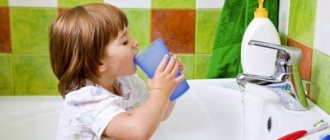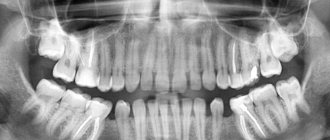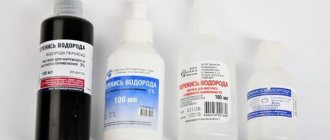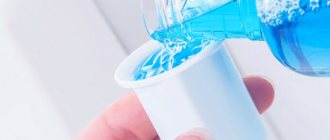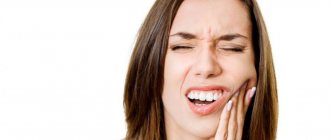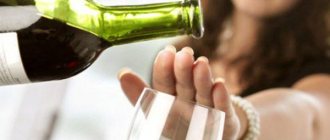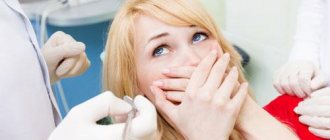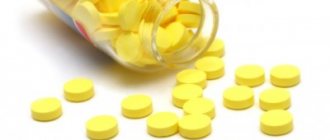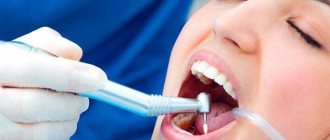What to do next?
- After the affected area of skin has been thoroughly washed, it is time to apply an anti-inflammatory agent (antiseptic). It will dry the wound and help restore damaged tissue. If you do not do this in time, the wound will not heal for a long time and will fester.
- Doctors recommend keeping the wound closed until it heals. To do this, apply gauze or other soft hypoallergenic cloth to the washed wound to protect the damaged area of skin.
- Change the bandage every day. This will give you the opportunity to regularly check the condition of the wound and determine whether it needs moisture or needs to be dried out.
This simple method will help heal, disinfect the wound and protect the body from.
Very often, adults, having received a cut or wound, neglect precautions and are in no hurry to treat the damaged area. But such an irresponsible attitude can lead to serious complications and even cause death. If an open wound is not treated in a timely manner, the following complications are possible:
- large blood loss;
- blood poisoning;
- inflammation and suppuration;
- tetanus infection.
If you accidentally cut your finger with a knife and neglect the fact that blood is coming from the wound, the consequences can be very dire. With a shallow cut, blood slowly oozes out, and significant loss of blood is only possible if the person has poor blood clotting. With a deep wound, the blood flow is fast, and a large amount of it can be lost in a short time.
As a result of large blood loss, the functioning of the heart is disrupted, nausea and vomiting, dizziness and fainting begin. If, in addition, blood clotting is reduced, further deterioration of the condition is possible.
If dirt gets into an untreated wound, blood poisoning or sepsis may occur. Over the course of a day, your health deteriorates sharply: you feel chills, you feel weak in your muscles, your bones ache, and rashes appear on your skin. In the future, the condition worsens more and more: high temperature rises, consciousness becomes confused. Blood poisoning is difficult to treat and requires blood transfusion.
Dirt in the wound can also be the cause of another misfortune - tetanus. The area where the skin is damaged begins to irritate and then hurt. Manifestations of the disease continue even after the wound has healed. A person may not associate the malaise with damage to the epidermis.
As tetanus bacillus multiplies, harmful toxins enter the brain and spinal cord. As a result, muscle spasms and cramps begin. This condition does not go away even in sleep. Due to constant stress, the functioning of the cardiovascular and respiratory systems gradually deteriorates.
In other cases, the wound may become inflamed. Its surface turns red and is gradually covered with a purulent film. If the wound is not treated, you can become seriously ill. Body temperature rises to 39°C, chills occur, and temporary loss of consciousness is possible.
How to replace Chlorhexidine when treating wounds
The most famous analogue of Chlorhexidine can be called Miramistin solution, which has the same properties and actions, has the same high efficiency and an almost similar list of indications for use.
- Miramistin is only a functional analogue, precisely because of its similar action, and although the main substance in these drugs is different, they can completely replace each other. The use of Miramistin, unlike Chlorhexidine, is not contraindicated for people suffering from any types of dermatitis.
- Akhdez-3000 , which has a pronounced fungicidal effect, suppressing harmful microflora in literally 30 seconds. After application to the skin or surface of wounds, the product remains effective for an hour if the injury remains open, and for at least 3 hours if a sterile bandage is applied or medical gloves are worn (when treating hands).
- Citeal is another analogue containing Chlorhexidine, along with Hexamidine and Chlorocresol. The drug belongs to the group of foaming antiseptic solutions used to treat hands and skin surfaces, as well as mucous membranes and all kinds of damage.
Sources:
https://pillsman.org/25452-hlorgeksidin-dlya-obrabotki-ran.html https://medoperacii.ru/raznoe/9-antiseptikov-dlya-obrabotki-ran/.html https://1travmpunkt.com/rany /obrabotka-ran/hlorgeksidinom.html
Question answer
In connection with the epidemiological situation regarding Covid-19, questions arise:
- Will chlorhexidine be safe as a hand sanitizer against coronavirus? In the complex - yes, if it is an alcohol solution containing 95% ethanol.
- Is it possible to disinfect hands with chlorhexidine against coronavirus? Can.
- How to use chlorhexidine for coronavirus? The alcohol solution can be sprayed onto things and applied to the entire skin, avoiding mucous membranes.
- How to use chlorhexidine for coronavirus? It is most effective to use an aerosol spray and treat any non-alcohol-soluble surfaces, including clothing and skin.
- Can surfaces be treated with chlorhexidine against coronavirus? Can.
- Can chlorhexidine be used to prevent coronavirus? Only alcohol-based, in combination with other measures and means;
- Can you use chlorhexidine to wipe your hands against coronavirus? You can treat your hands with an alcohol solution of Chlorhexidini bigluconas.
- What is the concentration of chlorhexidine against coronavirus? According to the CDC, the Covid-19 virus is sensitive to alcohol-containing drugs that contain at least 60% ethanol; in an alcohol solution its content is 95%.
We suggest you familiarize yourself with Green plaque on the tongue, causes and methods of treatment,
chlorhexidine
Ingestion of the solution
Doctors warn that gargling with this remedy must be done very carefully so as not to swallow a large amount of the substance, as it has a burning effect and can cause irritation of the mucous membrane.
Be careful! Ingestion of the product in large quantities may result in a burn to the esophagus.
The drug chlorhexidine is poorly absorbed into the blood. If ingested, there is no risk of poisoning.
But an external antiseptic drug, entering the digestive tract, will also actively act against bacteria there, destroying even those that are useful and necessary for normal life.
Such a violation of the microflora will lead to dysbacteriosis. A small amount of the substance will leave the intestines in the stool.
In case of accidental ingestion of more than 20 ml of the product, it is necessary to perform gastric lavage. To do this, drink at least 1 liter of warm, possibly salted water and induce vomiting by pressing on the root of the tongue. Then take activated carbon tablets.
We treat at home
We treat the wound at home:
- For household cuts and - it is important to remove contaminants. This can be done under running cold water, carefully using soap.
- Disinfection. Usually hydrogen peroxide and brilliant green are used. If it happens that there are no medications at hand, then you can use a saline solution.
- Cover the area with a plaster or bandage. If the injury is serious and deep, consult a doctor.
Without medical education, you can help a person with an open wound.
If the wound is small and clean, then after proper treatment, you will not need to see a doctor.
First, stop the bleeding. It is not always possible to stop the bleeding. If the open wound is not deep, then it is enough to press this place.
But if the bleeding cannot be stopped and it has a rich scarlet color, then contact medical personnel. Just before this you need to apply a tourniquet. However, you should not overtighten the tourniquet, as this can only cause harm and further interfere with processing.
If an artery is injured, then the tourniquet is applied one centimeter above the wound site, and if it is a vein, then lower.
Once the bleeding has stopped, disinfect the area. Everything is done with clean and sanitized hands. Hydrogen peroxide is a cleanser and disinfectant.
After treating with peroxide, you can treat the area around the damage with alcohol or brilliant green. Then a bandage should be applied. If you don't have sterile bandages on hand, any clean cloth will do.
Even a small wound needs to be monitored. If necessary, the first few days can be treated with saline solution.
Analogues of the drug
If necessary, you can replace Chlorhexidine with Miramistin solution. This drug has the same effect on wounds as Chlorhexidine.
Also analogues of the drug include:
- Miramistin is an antiseptic drug that has a similar spectrum of action when treating wounds and abrasions. Despite the fact that the active ingredients of these drugs are different, the drugs are interchangeable. Miramistit is allowed to be used by patients who suffer from various types of dermatitis;
- Akhdez-3000 is an antibacterial agent that can destroy harmful organisms in the shortest possible time. The maximum time this takes is 30 seconds. After the drug is applied to the skin or open surface of the wound, it continues to act for one hour on the open wound. If a sterile dressing is applied to the wound, the medicine continues to act for three hours;
- Citeal is an analogue of Chlorhexidine and is also used to treat wounds and abrasions of various types. In addition, the drug, in addition to the main active ingredient called Hexamine, also contains a certain percentage of Chlorhexidine. This medicine forms a stable foam when applied. It is allowed to use the medication for the treatment of open wounds and damage to mucous tissue.
Read also: Is it possible to remove a tooth
Did you find a mistake? Select it and press Ctrl + Enter
Weeping wound
Sometimes a constant separation of fluid—ichor, pus, blood—forms on the surface of the injury, which complicates and slows down the healing process. A doctor should tell you how to properly treat a weeping wound, since with such a complication you must definitely seek qualified medical help.
- Use water-soluble ointments to treat the wound (Levosin and Levomikol are the safest for children).
- Change dressings as needed as soon as they become wet, but at least twice a day.
- Wash wet wounds with a weak solution of potassium permanganate.
- Maintain maximum sterility.
- When the wound begins to dry out, its healing can be accelerated with the help of Kalanchoe juice, rosehip oil or sea buckthorn oil.
If you are not sure that you can change your child’s bandages on a weeping wound yourself, it is better to take him to the nearest hospital every day, where the damage will be treated sterilely and efficiently.
In order for any wound received by a child to heal, a certain period is necessary. Occasionally, re-dressing and debridement may be required in the emergency room or surgeon's office. If the injury is infected, antibiotics may be prescribed. Treatment of any type of wound should be carried out under the constant supervision of an experienced surgeon and in strict accordance with his instructions and recommendations.
After proper treatment of the open wound, it is left alone for two days, then healing ointments can be used.
Anyone has been injured in childhood. Usually these are cuts. The victim may not pay attention to the cut wound.
Orthopedist-traumatologist: Azalia Solntseva ✓ Article checked by doctor
Adults get injured in everyday life, cut with knives and razors.
Indications for use
Indications for use of the drug include:
- Carrying out disinfection of wounds of various types, including those on mucous membranes.
- Use as part of complex therapy in the treatment of various fungal infections.
- Preventive treatments to prevent STDs.
- Treatment of oral diseases such as gingivitis, periodontitis and stomatitis.
When treating wounds, cuts, abrasions and other injuries, the solution is applied directly to the surface of the skin and injury without the use of gauze pads or cotton swabs (discs). To carry out the treatment, simply pour the composition onto the damage after preliminary cleaning.
To disinfect injured areas, a solution of concentration from 0.05 to 0.1% is used. The same solution (in the same concentration) can be used to carefully treat the surface of burns, including chemical and thermal ones. In this case, the solution will work not only as an antiseptic, but also as a means of cooling the surface, as well as washing away chemicals from the skin and the site of damage that led to the burn.
Chlorhexidine is often used for dressings instead of hydrogen peroxide. Wounds, including purulent ones, are washed with the solution, the hands of medical personnel are treated, and bandages that have dried to the wounds are watered for painless and careful removal.
Features and Action
Chlorhexidine is widely used for treating the affected area, sterilizing surgical instruments, disinfecting the surgical field, and for the prevention of sexually transmitted diseases.
It is necessary to wash the wound with Chlorhexidine to prevent infection or to remove purulent contents from an already infected lesion.
The effect of the drug on the body consists of the following effects:
- destruction of a wide range of bacteria and viruses;
- long lasting disinfectant effect. In surgery, it is used to treat wounds with Chlorhexidine before surgery;
- pronounced antifungal, antiprotozoal, antibacterial action allows it to be used for injuries of various origins (injuries with sharp objects, animal bites).
We invite you to familiarize yourself with Teeth numbering in dentistry: a diagram of a person’s teeth with numbers, tooth numbers in dentistry
A feature of Chlorhexidine, in contrast to other antiseptics (brilliant, hydrogen peroxide, aqueous iodine solution), is:
- does not have a depressing effect on the wound healing process;
- lack of color, unpleasant odor;
- hypoallergenic composition;
- does not cause pain, does not leave marks, which is important when treating skin lesions in children;
- disinfects, but does not stop bleeding;
- does not dry out, does not cause burns of mucous membranes;
- there is no addiction, which allows you to repeatedly use Chlorhexidine for washing wounds without reducing effectiveness;
- used for various localizations of damage, an important condition is the selection of the required concentration: for rinsing the mouth during dental interventions 0.02-0.03%, treatment of injuries - 0.05-0.1%;
- Available in several dosage forms for ease of use: solution (disinfection of wounds, sterilization of instruments, treatment of the umbilical terminal of newborns), gel (for the oral cavity), vaginal suppositories.
Chlorhexidine - is it possible to treat a burn and how to do it?
The most common are household thermal burns from liquids, hot objects and open fire. Chemical burns are less common in medical practice.
Inflammatory processes, often accompanying 2nd-4th degree burns, occur due to the fact that the integrity of the epidermis is disrupted, and conditions are created for the wound to become infected with pathogenic bacteria. A sign that the burn has caused serious skin damage is blisters with clear fluid inside.
After opening the blisters, wounds remain in their place, open to the penetration of bacteria and fungi. This occurs against the background of a decrease in the protective functions of the body, characteristic of the post-traumatic period.
Treatment of infected burns is more difficult and takes longer than treatment of uncomplicated burn wounds. Infection in a wound can lead to serious complications, including sepsis.
Timely disinfection of the wound plays a vital role in the entire treatment process.
The risk of infection can be significantly reduced if you treat the burn wound with Chlorhexidine solution immediately after first aid.
Pharmacological properties
“Chlorhexidine” (reviews confirm this) is an excellent antiseptic, active against many bacteria, in particular Treponema pallidum, Gardnerella vaginalis, Ureaplasma spp and some others, as well as protozoa (Trichomonas vaginalis) and the herpes virus.
Due to its antiseptic properties, the drug is used in many areas of medicine.
How to properly use Chlorhexidine for burns?
Various means are used to treat burns. The choice of drugs depends on the degree of the burn, its type and area, as well as on the individual characteristics of the victim, his sensitivity to certain components of the medicine, the general condition of the body, etc. In this case, we will consider the effect of Chlorhexidine in the treatment of burns.
special instructions
The solution remains active in the presence of blood and organic substances. Contact of the drug with the eyes, membranes of the brain and the auditory nerve should be prevented.
In people with an open head injury, damaged spinal cord, or perforation of the eardrum, it is necessary to avoid getting the product on the surface of the brain, meninges, and also in the tympanic cavity.
If the drug gets into your eyes, rinse them immediately.
It is not recommended to mix with other detergents and disinfectants.
If clothing has been in contact with the product, do not expose it to hypochlorites that produce active chlorine.
Source: https://viva-dent24.ru/sredstva/mozhno-li-szhech-kozhu-hlorgeksidinom.html
Composition of chlorhexidine
- active ingredient: Chlorhexidine bigluconate 20% 2.5 ml (corresponds to 0.5 g of Chlorhexidine bigluconate);
- excipients: purified water up to 1000 ml.
- active ingredient: Chlorhexidine bigluconate 20% 2 g (converted to Chlorhexidine bigluconate);
- excipients: purified water up to 1000 ml.
- active ingredient: Chlorhexidine bigluconate 20% 5 g (converted to Chlorhexidine bigluconate);
- excipients: purified water up to 1000 ml.
Burns to the mucous membrane with chlorhexidine, what to do?
Chlorhexidine is a potent medicinal universal antimicrobial agent, widely used in many medical fields, as well as for treating the throat by gargling a solution.
The product has advantages in the treatment of diseases over many analogues, as well as contraindications, so before use it is necessary to familiarize yourself with the cases in which this drug is prescribed for the treatment of colds and throats, whether it is possible to rinse your mouth with chlorhexidine, whether the product is safe for children and pregnant women ?
Composition and pharmacological properties of the drug
The drug with the main active ingredient – “chlorhexidine bigluconate” is presented in several dosage forms:
- aerosol;
- candles;
- gel;
- alcohol solution;
- water solution.
The forms have different concentrations of the main component: from 0.016% to 20%. This product is a powerful antiseptic; its action is directed against fungi, bacteria, protozoa, viruses, and microbial spores. It also actively fights Trichomonas, Treponema, and Gonococci.
The principle of action is based on the fact that the active substance of the drug destroys the cell wall of bacteria, which leads to their death. Chlorhexidine is used as an external, vaginal and mouth rinse.
Application area
The drug has proven itself as a good disinfectant. The range of its application is very wide:
- disinfection of injection and surgical fields;
- processing of surgical equipment and instruments;
- treatment of gynecological and venereal diseases;
- washing burns and wounds;
- rinsing the mouth with a solution of “Chlorhexidine” during dental and ENT procedures;
- skin care after cosmetic interventions.
Chlorhexidine solution for sore throat and other throat diseases
The drug is prescribed for the treatment of inflammatory processes in the throat. Since it actively and successfully destroys all types of bacteria that cause sore throat, laryngitis, pharyngitis and other diseases of the pharynx and pharynx.
Most people who are faced with throat diseases know whether it is possible to gargle with chlorhexidine. This is no accident - the drug has been produced for a long time and is an effective antiseptic.
For these purposes, an antiseptic is used in the form of an aqueous solution, which must be used to gargle. Once in the oral cavity, the product not only fights the source of infection, but also forms an invisible film that creates a kind of barrier on the mucous membrane for further infection. The rinsing procedure is carried out according to plan:
- Use a solution containing no more than 0.2% active ingredient.
- If the solution was stored in the refrigerator, it must be heated before the procedure so that the temperature of the product is close to body temperature.
- You will need 15-20 ml of solution per rinse.
- Gargle for 20-30 seconds, then spit out the liquid.
- You should not eat or drink for 2 hours after rinsing.
- The procedure is carried out 3-4 times during the day.
You can also rinse your mouth with chlorhexidine if you have a purulent sore throat. But in this case, the presence of pus on the tonsils reduces the effect of the antiseptic.
Therefore, before the procedure using the drug, it is necessary to rinse your throat with plain warm water. This will ensure the removal of pus, therefore, improving access of the drug to the site of inflammation.
Use of chlorhexidine rinse for dental purposes
It is recommended to rinse your mouth with a solution of 0.05 - 0.1% for gingivitis, stomatitis, and periodontitis. Before the procedure, you need to brush your teeth with toothpaste. Rinse your mouth thoroughly with water to remove any remaining cleanser.
Attention! Chlorhexidine should not be used together with soap and toothpaste. The components of these products deactivate the effect of the antiseptic.
In case of inflammation of the gums, the rinsing procedure is carried out similarly to the procedures that relieve ENT diseases. The course of treatment will be from 5 to 10 days, 3 procedures per day.
If a tooth has been removed, in the next 3 days, not intensive rinses are prescribed, but baths. They differ from rinses in that you simply need to keep the liquid in your mouth, concentrating it in the problem area.
At the same time, without making any movements, then spit out the solution.
This method will ensure not only disinfection, but also rapid healing of the tooth socket. A blood clot is formed in it - a kind of protection against penetration of pathogenic microflora into the wound. Rinsing provokes the washing out of this clot, which threatens bleeding and infection.
Baths are done as needed, but no more than 4 per day, each lasting up to 30 seconds.
3 days after dental surgery, you can rinse your mouth with Chlorhexidine using a 0.05% solution. Each procedure for treating the mouth with an antiseptic should last no more than 1 minute. In total they are carried out 3-4.
Pay special attention! When rinsing your mouth, you must take into account the temperature of the solution - it should not exceed 36-38 degrees. Hot liquid worsens the abscess, while cold liquid causes vasoconstriction.
Source: https://detsad14elochka.ru/ozhog-slizistoj-hlorgeksidinom-chto-delat/
Action tactics
If you have a minor domestic injury, you can figure out on your own how to properly treat the wound. First of all, it must be washed with soap. This must be done from the center to the outer edges. Otherwise, you can only make the situation worse by increasing the number of microbes in the middle. But if you just use a clean, sharp knife, you can skip this step.
After this, you can begin to disinfect the damaged area. To do this, it is important to know how to treat a wound. So, the problem area must be filled with an antiseptic. Hydrogen peroxide is considered the ideal option. By the way, it is highly undesirable to use cotton wool for any cuts. If its fibers get inside, it will be very difficult to get them out.
After this, the wound must be covered with a sterile napkin, which will need to be secured with a plaster or bandage. Please note that the bandage must be changed as it begins to get wet. The damaged area can be moistened with peroxide each time.
Effect of Chlorhexidine on the skin
After contact with the skin, the active components of Chlorhexidine penetrate deep into the skin and inhibit the ability of bacterial cells to reproduce. After this, the cell itself begins to collapse. In this case, the decomposition of a dead bacterial cell does not harm the body, since Chlorhexidine helps get rid of decay products. This product acts only on the outer layers of the skin, without penetrating into the body. After contact with the skin, it is absorbed into the epidermis and begins its therapeutic effect.
When Chlorhexidine is used against acne, it has the following effects:
- destroys pathogenic bacteria;
- reduces inflammatory processes;
- helps get rid of dead cells;
- cleanses the skin, disinfects abrasions and wounds.
Is it possible to wipe your face with Chlorhexidine?
Rubbing the face with Chlorhexidine is one of the ways to treat pustular diseases. This method is used when pustular inflammations are not isolated. You can wipe your face with Chlorhexidine to cleanse the pores of impurities and get rid of germs. If there are few rashes, then you should resort to another method of treating acne: spot lubrication. This will allow you not to once again disturb the bacterial microflora of the skin and water balance.
Chlorhexidine is an effective remedy in the fight against dermatological problems, but its frequent use can cause new problems. Dermatologists, answering the question whether it is possible to wipe acne with Chlorhexidine every day, answer in the negative. The effect of Chlorhexidine extends not only to harmful microorganisms, but also to beneficial ones that are necessary for the normal functioning of the body and protect it. Long-term and frequent use of this drug reduces the protective functions of the skin and leads to the appearance of new rashes.
When treating acne with Chlorhexidine, doctors recommend being attentive to the reaction of your skin. If new rashes appear on the skin, it begins to flake more, itching and redness appear, then you should reduce the use of the drug or replace it with other medications. Doctors agree that a safe course of treatment (in the absence of allergic reactions) is a course of two weeks.
Does Chlorhexidine dry out the skin?
People who have been using this drug to treat acne for a long time have noticed that Chlorhexidine dries out the skin. After discontinuation of Chlorhexidine, the oiliness of the skin increased and pustular inflammation resumed. This can be avoided if you use Chlorhexidine taking into account the following recommendations:
- apply Chlorhexidine pointwise, without affecting healthy skin;
- use the drug for a course of no more than two weeks;
- Do not combine the product with other antiseptics.
Does Chlorhexidine help with acne on the face?
Before you start using this drug, you want to know for sure whether Chlorhexidine helps with acne. Numerous positive reviews indicate that using Chlorhexidine can reduce skin problems and get rid of acne. Chlorhexidine is not a panacea for all skin problems; it helps only in cases where the cause of inflammation is the following bacteria:
- Bacteroides fragilis;
- gonococci;
- treponema pallidum;
- trichomonas vaginalis;
- chlamydia;
- gardnerella vaginalis;
- ureaplasma.
A weak effect can be observed when fighting Proteas and Pseudomonas.
Animal bites
Unfortunately, some people experience another type of skin damage. If you are bitten by a dog, you need to treat the damaged area as soon as possible. To do this you will need hydrogen peroxide and brilliant green. But you shouldn’t douse the bites with alcohol, cologne or iodine. This will only make the situation worse.
After washing the damaged area with peroxide, it is better to see a doctor. Perhaps he will decide that it is better to sew up the edges of the wound or simply treat it further. In some situations, it is better to remove damaged tissues, as they can be a source of infection.
Treatment
Dyshidrotic eczema is difficult to treat, since the cause of its development often remains unclear. Complex therapy includes sedatives and anti-allergenic drugs, ointments and creams, drying antiseptic drugs, diet and physiotherapy.
General recommendations
Since dyshidrotic eczema can be the result of an allergic reaction, eliminate potential allergens from your diet:
- sugar and dishes containing it;
- honey;
- yeast baked goods;
- eggs;
- citrus;
- chocolate;
- red fruits and berries.
Follow a low-salt diet and eliminate processed foods. Follow simple rules to reduce your risk of developing eczema:
- When cleaning, only wear gloves to protect your hands from contact with moisture and household chemicals.
- Rinse your underwear well so that no traces of powder remain on it.
- For washing, use baby or hypoallergenic soap.
- Wear cotton socks or tights that absorb sweat and allow your skin to breathe.
- Choose shoes made from natural materials. Take good care of it and disinfect it periodically to avoid developing a bacterial or fungal infection.
- Avoid stress. If it is impossible to protect yourself from worries, find a way to quickly calm down: do yoga, listen to pleasant music. If you can't relax on your own, visit a psychologist.
If you discover internal chronic diseases that cause the development of eczema, treat them. External symptoms will disappear on their own when the internal state of the body normalizes.
When eczema occurs under the influence of stressful life situations, the patient may need the help of a professional psychologist.
Systemic therapy
Since stress and nervous disorders are a common cause of the development of dyshidrotic eczema, patients are prescribed sedatives. Take them for 3-4 weeks in a dosage strictly determined by your doctor. To enhance the effect, sedatives are administered in the form of injections.
Of the synthetic medications to combat dermatosis, doctors recommend:
- "Adaptol";
- "Tenoten";
- "Afobazole".
If you do not welcome synthetic drugs, use homeopathic remedies based on herbs and fruits:
- "Novopassit";
- "Valemidin";
- "Persen."
The following medications are suitable for children, pregnant and lactating women:
- "Glycine";
- Valerian tincture;
- "Pantogam".
Sedatives relieve itching and prevent nervous shock.
If the cause of eczema is an allergic reaction, take antihistamines:
- "Erius";
- "Zyrtec";
- "Tavegil";
- "Suprastin".
If there are disorders of the nervous system, the doctor prescribes calcium preparations, such as “Calcium chloride”, “Calcium gluconate”. In severe cases, systemic therapy includes additional agents:
- sodium thiosulfate solution in injection form;
- “Gemodeza” solution in the form of infusions;
- sorbents inside (“Polyphepan”, “Enterosgel”, “Activated carbon”);
- antihistamines in injection form (Clemastine, Chloropyramine, Ebastine);
- corticosteroids intravenously or intramuscularly (“Diprospan”, “Prednisolone”);
- immunomodulatory agents (“Imunofan”, “Plazmol”, “Myelopid”, “Timalin” and others);
- vitamins of group B, C in the form of vitamin complexes (“Alphabet”, “Vitrum”, “Essentiale”);
- anti-inflammatory drugs (Ibuprofen, Diclofenac);
- angioprotectors to reduce vascular permeability (“Dipyridamole”, “Pentoxifylline” and others);
- probiotics and prebiotics (“Linex”, “Bifiform”);
- biostimulating agents (tincture of eleutherococcus, ginseng, aloe).
Dermatovenerologist V.V. Makarchuk will tell you in detail about the methods of systemic therapy for eczema. After watching the video, you will learn what the difference is between weeping and dry eczema, and how the methods of treating these forms of the disease differ.
Local therapy
Topical products come in several types depending on the effect they have on the body.
For weeping eczema, anti-itching agents are prescribed, which are used in the form of lotions or compresses:
- silver nitrate;
- "Furacilin";
- "Resorcinol";
- tannin;
- boric acid;
- "Amidopyrine."
To disinfect lesions, use:
- "Miramistin";
- "Chlorhexidine";
- brilliant green;
- potassium permanganate solution;
- "Fukortsin".
To dry the wet surface, use talc or zinc paste. Tar or sulfur ointment is suitable to relieve inflammation.
For dyshidrotic eczema, non-hormonal creams and ointments for allergies are usually prescribed:
- "Radevit." Ointment with retinol and ergocalciferol. It relieves itching, eliminates inflammation and accelerates tissue repair. Apply the product in a thin layer to the skin 2 times a day. The course of treatment is 2-4 weeks. Suitable for children of any age.
- "Eplan". A sought-after effective remedy that heals wounds well, has an anti-inflammatory effect, relieves pain and reduces the impact of harmful bacteria. Judging by patient reviews, it moisturizes and softens the skin. Apply the ointment to the affected surface every 6-8 hours. Treatment period is from 4 to 8 weeks.
- "Elidel". A cream based on pimecrolimus, which stimulates local immunity and has an anti-inflammatory effect. When applied topically, it perfectly relieves itching and irritation. Apply the medicine to the skin 2 times a day for a month.
- "Losterine." Naftalan cream, which has a pronounced anti-inflammatory and antimicrobial effect. In addition to naphthalan, the composition includes salicylic acid, panthenol, urea, almond oil and Japanese sophora extract. The product exfoliates keratinized particles well, relieves pain, and dilates blood vessels. Use it up to 3 times a day for a month. Longer use of the cream is prohibited by the instructions.
- "Solcoseryl". A gel based on dialysate from the blood of dairy calves improves cell nutrition, accelerates tissue regeneration, and activates collagen synthesis. The ointment is easily washed off because it does not contain fat. For eczema, apply the gel to a clean surface of the skin 2-3 times a day; it can be used as a medicine under a bandage. The duration of treatment with Solcoseryl is not limited and is recommended until the wounds are completely healed.
If treatment is complicated by a bacterial infection, use antibacterial ointments:
- "Fucidin";
- "Bactroban";
- "Levosin";
- "Tetracycline";
- "Gentamicin."
Corticosteroid hormonal ointments are prescribed in severe cases, for painful wounds and erosions. Hormonal therapy is carried out in short courses, since long-term use of these drugs causes side effects, including tissue atrophy. Corticosteroid ointments for eczema include:
- "Sinaflan";
- "Advantan";
- "Celestoderm";
- "Beloderm";
- "Elokom";
- "Dermovate."
Taking vitamin complexes including vitamins A, E, B and physiotherapeutic procedures are aimed at strengthening the body's protective functions and increasing resistance to disease.
Physiotherapy includes:
- magnetic, ultrasonic or laser effects;
- cryotherapy;
- darsonvalization;
- electrosleep;
- baths with aromatic oils and herbs;
- acupuncture.
Patients are recommended to undergo sanatorium treatment with mud, hydrogen sulfide and mineral baths.
Complex treatment has a beneficial effect on the body and improves the patient’s condition.
An antiseptic, depending on the concentration used, exhibits a bacteriostatic or bactericidal effect against gram-positive and gram-negative bacteria. The bacteriostatic effect (of both aqueous and alcoholic working solutions) is manifested in a concentration of 0.01% or less;
bactericidal - in a concentration of more than 0.01% at a temperature of 22 degrees C and exposure for 1 minute. Fungicidal effect - at a concentration of 0.05%, a temperature of 22 degrees C and exposure for 10 minutes. Virucidal effect (against lipophilic viruses) - manifests itself at a concentration of 0.01-1%. It affects bacterial spores only at elevated temperatures.
Effective against gram-positive and gram-negative bacteria - Treponema spp., Neisseria gonorrhoeae, Trichomonas spp., Chlamydia spp., Ureaplasma spp. It is stable, after treatment of the skin (hands, surgical field) it remains on it in a certain amount sufficient to exhibit a bactericidal effect.
Release forms and manufacturers
The drug Chlorhexidine is available in two main dosages. The first is 0.05%, the second is a more concentrated solution in which the percentage of the active substance is increased to 20%. The choice of the optimal dosage for use is made by the attending physician.
The main form of release of Chlorhexidine is a solution for external use, wound treatment, and medical instruments. In recent years, suppositories containing chlorhexidine bigluconate have also appeared on the market. They are used by women to treat and prevent a number of vaginal infections. Additionally, Chlorhexidine is available in the form of a spray for ease of processing.
The drug is launched on the market, located in St. Petersburg. You can also find a solution from the following manufacturers:
- SPC "Biogen";
- LLC "Tula Pharmaceutical Factory";
- Samara Pharmaceutical Factory LLC, etc.
Since Chlorhexidine is a popular disinfectant medication, many companies are involved in its production, both in Russia and abroad.
Contraindications and possible harm
The drug must be used carefully, especially for treating gums and throat. Antiseptics have side effects. They are mainly associated with overdose and high concentration.
Carefully! In no case should you use a solution of Chlorhexidine containing more than 0.2% of the active substance for rinsing your mouth.
It is a mistake to believe that the higher the concentration, the more effective it is. Solutions of 0.5 - 1% are intended for external use. Once in the oral cavity, they threaten to severely burn the mucous membrane.
Even if a solution of acceptable concentration is taken for rinsing, and a burning sensation is felt on the tongue, you need to add water to the product, making it even weaker.
Long-term use of the drug provokes:
- constant dry mouth;
- darkening of tooth enamel;
- sleep disorders;
- formation of dental stones;
- dullness of taste;
- skin irritation;
- swelling of the salivary glands.
Chlorhexidine is contraindicated for people with an allergic reaction, or it is prescribed individually.
